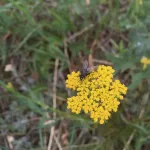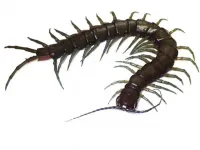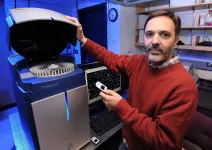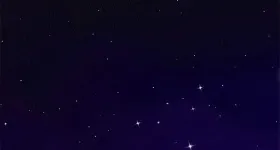(Press-News.org) The next time you go for a hike, take an extra moment to appreciate the seemingly ordinary life all around you. A house fly, humble yarrow weed and other "generalist" plants and pollinators play a crucial role in maintaining biodiversity and may also serve as buffers against some impacts of climate change, finds new University of Colorado Boulder research.
The findings, published this month in Ecology, provide valuable insights for prioritizing the conservation of species that contribute to the strength of ecological communities.
"A lot of times, conservation efforts are geared toward things that are rare. But oftentimes, species that are common are also in decline and could go extinct, and that could have really big repercussions for maintaining biodiversity," said Julian Resasco, lead author on the study and assistant professor of ecology.
A "generalist" simply refers to a species that interacts with a lot of other species. For example: A bee that visits many different species of flowers, or conversely, a flower that's visited by many species of bees and other pollinators, said Resasco.
Bumblebees are well-known generalists, their fuzzy, cute bumbling bodies having garnered a large fan base of admirers over the years. But there are unsung heroes among generalist pollinators, including an insect that we often consider with disdain: flies. According to Resasco, some flies are the most common visitors to flowers, and they visit lots of different flowers.
Generalist plants that Colorado residents may recognize include mountain parsley (Pseudocymopterus montanus), which are made up of bunches of small yellow flowers, and common yarrow (Achillea millefolium), which looks similar but are usually white. These plants may not be the famous, brightly colored specimens that wildflower enthusiasts go looking for in summer, but this research finds their role is important to the ecological stability of the meadows where beloved columbine, fireweed and Indian paintbrush grow.
Ecologists have long studied networks of interactions between plants and pollinators, and previous research has shown that generalists can be found time and time again within and across landscapes, and during warm seasons or over several years. What this new study finds is that within seasons, over the span of many years and across the landscape, generalists are able to persist and act as anchors for their communities.
Because so many species rely on generalists, having healthy populations of them helps support a robust community of plants and pollinators that are less susceptible to local extinctions, said Resasco. This robustness may also be important for buffering against increasing unequal shifts in the seasonal timing of species interaction due to climate change, known as phenological mismatch.
What's common is crucial
For the past six years, Resasco has returned to the same mountain meadow in the morning each week, between snowmelt in May and the return of snowfall in September, to observe bumblebees, flies and beetles dance and hop between daisies, roses and asters at six different marked plots.
There's nothing particularly unique about this east-facing meadow, surrounded by aspen and spruce-fir forest. But here, just below Niwot Ridge at 9,500 feet above sea level, near the CU Boulder Mountain Research Station, Resasco counted 267 different species of pollinators that visited the flowers of 41 species of plants--and an encouragingly healthy number of generalists.
Even Resasco, an experienced ecologist recently selected as an early career fellow by the Ecological Society of America (ESA), was surprised by the biodiversity that this meadow supports. Returning year after year to the same place, he found himself noticing more and more about the place.
"Every year teaches you something different," he said.
And these findings teach us that what is common could be crucial to help ecosystems weather current and future environmental change. From setting conservation priorities that protect generalists to leaving your local flies and flowers in peace, there are many ways to support these critical but common species.
Between late June and late July, these plants and pollinators will bloom and bustle in our backyards and nearby mountain meadows, awaiting hikers eager to see them. But if there aren't Instagram-worthy columbines waiting for you when you go, don't despair.
"If you just take some time to stop and observe what's around you, it's always interesting," said Resasco. "Don't overlook the common generalists."
INFORMATION:
Additional authors on this paper include Natacha P. Chacoff of the Institute of Regional Ecology, CONICET and Faculty of Natural Sciences and IML, National University of Tucumán; and Diego P. Vázquez of the Argentine Institute for Dryland Research and Faculty of Exact and Natural Sciences, National University of Cuyo, Mendoza, Argentina.
New research is shining light on the importance of farmers' markets' ability to mitigate potential disruptions to distribution networks in the face of system shocks like the COVID-19 pandemic.
In a recent study, the researchers found the markets' regional characteristics play a key role in the decision to move all or parts of their operations online -- and how that decision can help or hinder its surrounding community.
"By building online communities through their social media and website tools, farmers' markets can play a role in keeping the community connected and supporting a sustainable and just food system through the pandemic and beyond," said researcher Josalyn Radcliffe, a PhD student in Waterloo's School of Public Health and ...
Sophia Antipolis - 17 April 2021: Elevated blood pressure, high cholesterol and diabetes increase the risk of heart disease. But a large study today reveals that in people with these conditions, increasing activity levels is associated with a reduced likelihood of heart events and mortality. The research is presented at ESC Preventive Cardiology 2021, an online scientific congress of the European Society of Cardiology (ESC).1
Study author Dr. Esmée Bakker of Radboud University Medical Center, Nijmegen, the Netherlands said: "Previous research showed that improvements in physical activity are beneficial to health. However, those studies were performed in the general population. In our study, we were interested to see if there were similar effects in individuals with cardiovascular ...
Tokyo, Japan - Researchers from Tokyo Metropolitan University and Hosei University have discovered a new species of large, tropical centipede of genus Scolopendra in Okinawa and Taiwan. It is only the third amphibious centipede identified in the world, and is the largest in the region, 20 cm long and nearly 2 cm thick. It is also the first new centipede to be identified in Japan in 143 years, testament to the incredible biodiversity of the Ryukyu Archipelago.
Scolopendra is a genus of large, tropical centipede, one of the original genera named by the father of modern taxonomy himself, Carl Linnaeus. They are strong predators in any soil ecosystems they inhabit, with around 100 different species found in tropical regions around the world. Of these, only five have been ...
Research shows that a new telescope could detect a potential signature of life on other planets in as little as 60 hours.
"What really surprised me about the results is that we may realistically find signs of life on other planets in the next 5 to 10 years," said Caprice Phillips, a graduate student at The Ohio State University, who will share preliminary findings at a END ...
From engineered pandemics to city-toppling cyber attacks to nuclear annihilation, life on Earth could radically change, and soon. Scientists will forecast the fate of the planet at a END ...
Tarantulas are among the most notorious spiders, due in part to their size, vibrant colors and prevalence throughout the world. But one thing most people don't know is that tarantulas are homebodies. Females and their young rarely leave their burrows and only mature males will wander to seek out a mate. How then did such a sedentary spider come to inhabit six out of seven continents?
An international team of researchers, including Carnegie Mellon University's Saoirse Foley, set out on an ancestry.com-like investigation to find the answer to this question. They looked to the transcriptomes, ...
Faced with the tragic loss of the Arecibo observatory in Puerto Rico and the often prohibitive cost of satellite missions, astronomers are searching for savvy alternatives to continue answering fundamental questions in physics.
At a END ...
JUPITER, FL--Making memories involves more than seeing friends or taking photos. The brain constantly adapts to new information and stores memories by building connections among neurons, called synapses. How neurons do this--reaching out arm-like dendrites to communicate with other neurons--requires a ballet of genes, signaling molecules, cellular scaffolding and protein-building machinery.
A new study from scientists at Scripps Research and the Max Planck Florida Institute for Neuroscience finds a central role for one signaling molecule, a long, noncoding RNA that the scientists named ADEPTR.
Using a variety of technologies, including confocal and two-photon microscopy, they track ADEPTR's moves, watching as it forms, travels, amasses at the ...
AMES, Iowa - A lot is riding on the continued advancement of plant sciences.
Take the food supply, for starters. Climate change and population growth will continue to pose challenges in the future, and crop production will require innovation and progress by plant scientists in order to keep pace. It isn't an overstatement to say that populations around the world will go hungry if plant science stagnates, said Gustavo MacIntosh, a professor in the Roy J. Carver Department of Biochemistry, Biophysics and Molecular Biology at Iowa State University.
"At the end of the day, either you eat plants or you eat food that ate plants," MacIntosh said. "Plants are the basis for the food we have."
MacIntosh predicts ...
When the Electron Ion Collider received the go-ahead in January 2020, it became the only new major accelerator in the works anywhere in the world.
"All the stars aligned," said Elke-Caroline Aschenauer, Brookhaven National Laboratory Staff Scientist and a leader in developing the EIC plans. "We have the technology to build this unique particle accelerator and detector to do the measurements that, together with the underlying theory, can for the first time provide answers to longstanding fundamental questions in nuclear physics."
The EIC isn't the only Brookhaven project poised to reshape nuclear and particle physics. Forthcoming data from the Relativistic Heavy Ion Collider could finally detect the elusive chiral magnetic effect. Meanwhile, planned accelerators could run on sustainable ...







